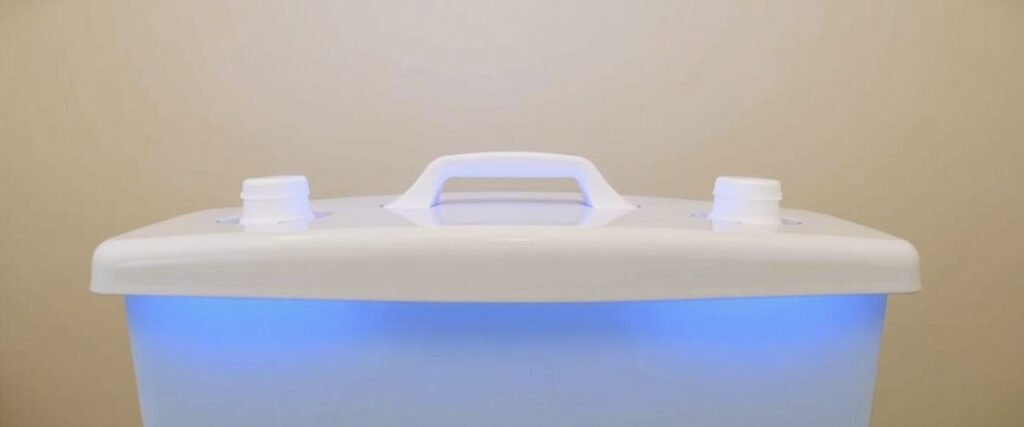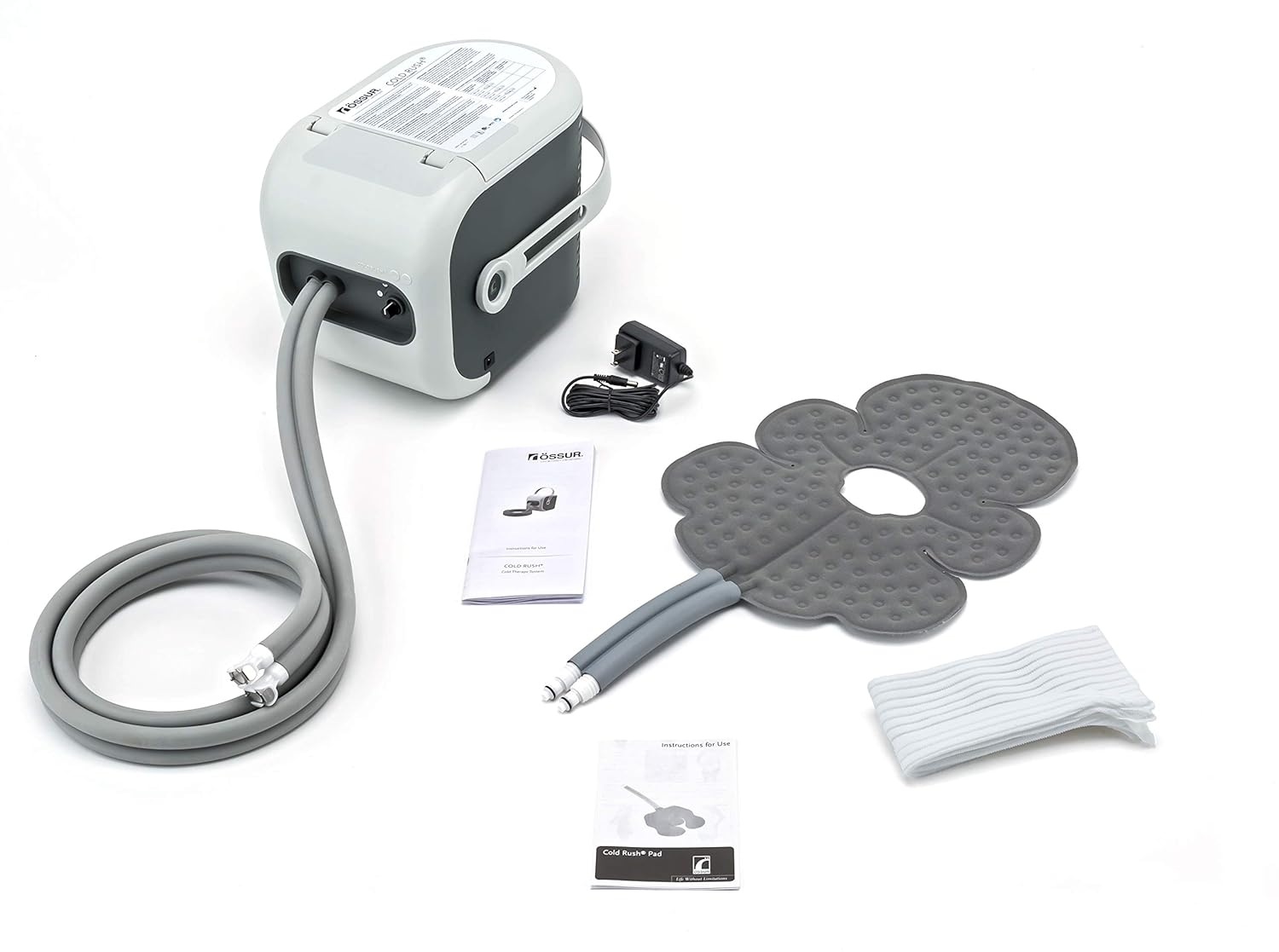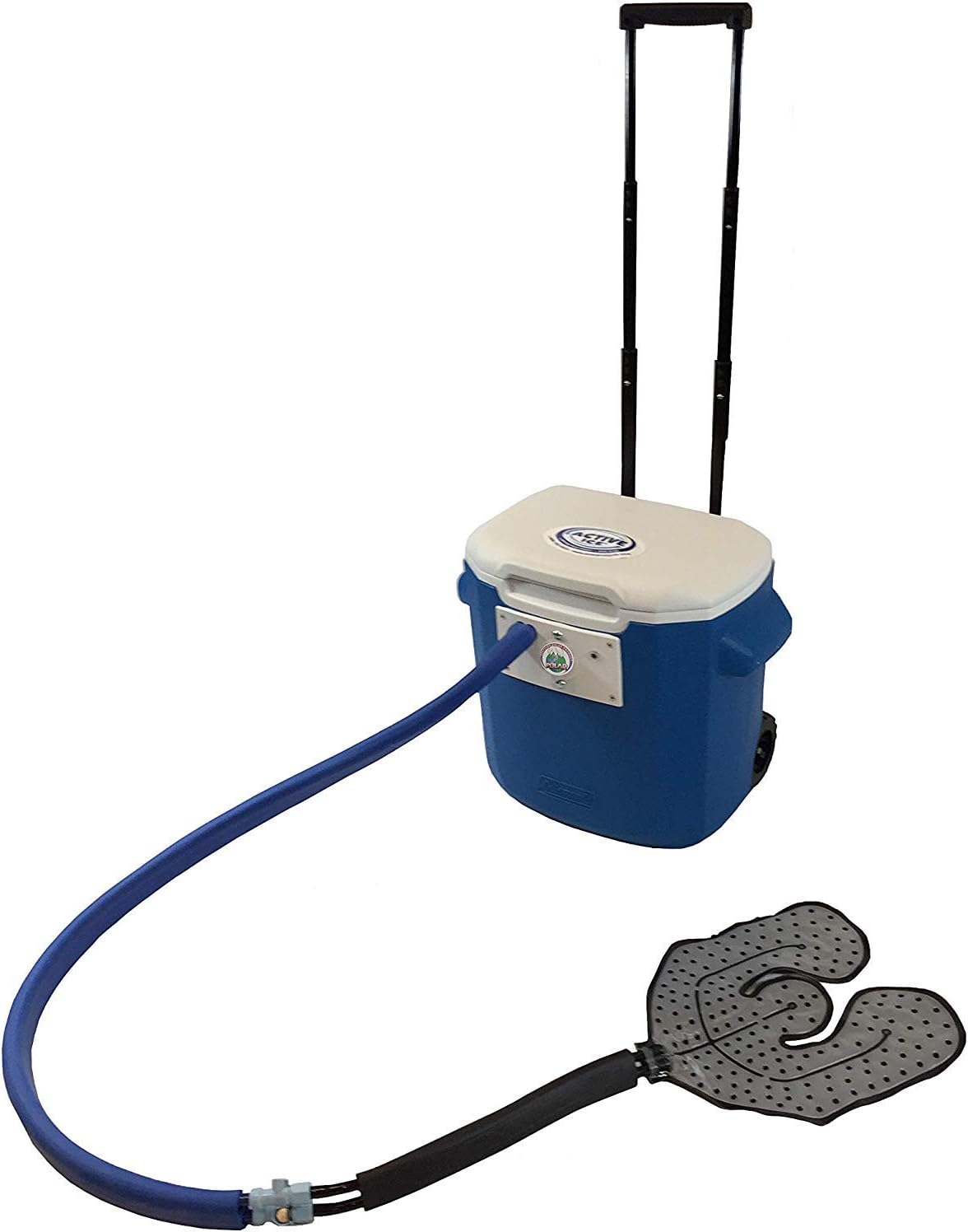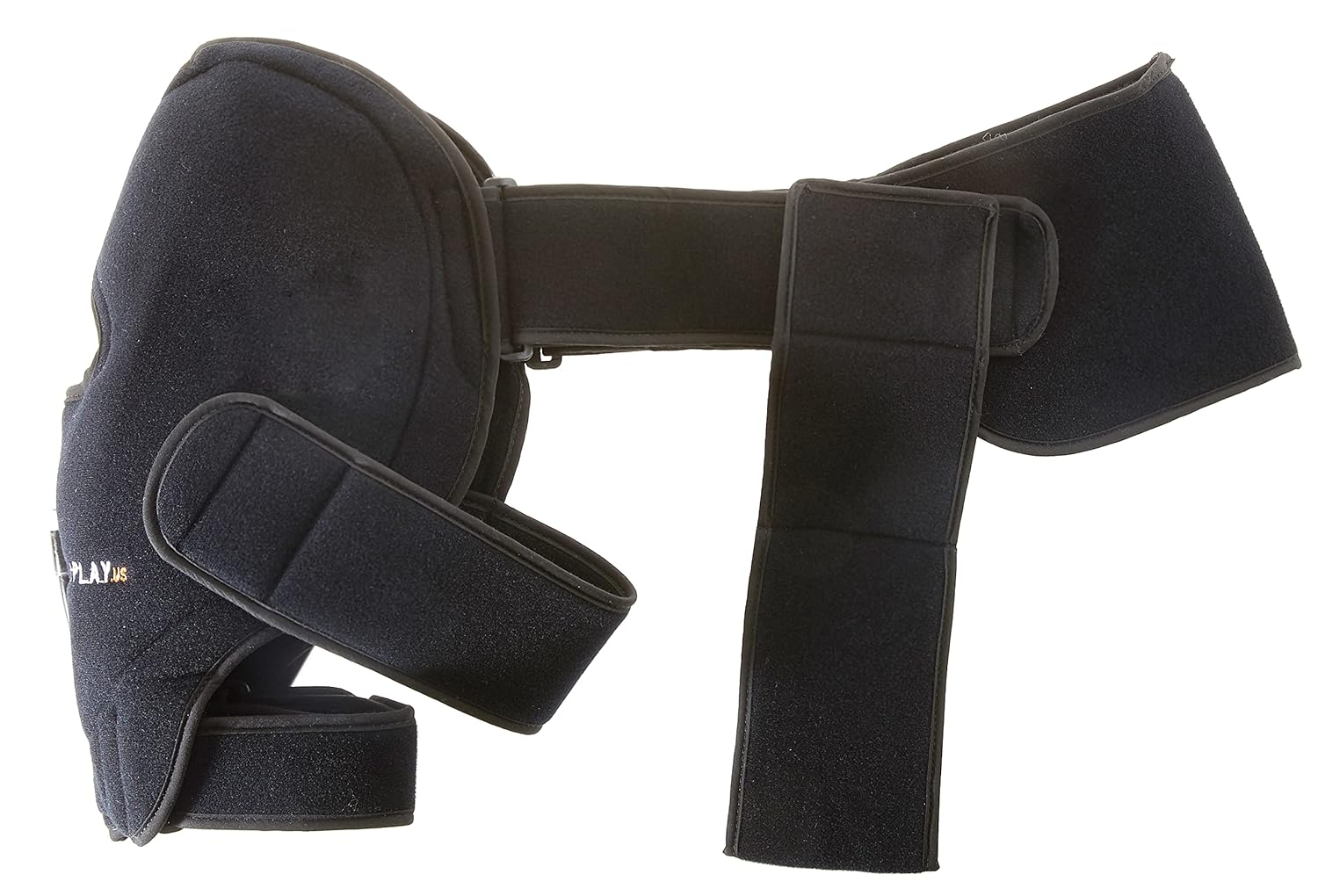Best Cold Therapy Machines: The Ultimate Guide to Icy Relief

Cold therapy has come a long way from the days of holding a bag of frozen peas on a sore muscle. Modern cold therapy machines offer precise, consistent cooling that can significantly enhance recovery and pain management.
This comprehensive guide will explore the science behind cold therapy, the benefits of using these machines, and how to choose the right one for your needs.
The Science of Cold Therapy
Cold therapy, also known as cryotherapy, works by reducing blood flow to a particular area, which can significantly decrease inflammation and swelling. When cold is applied to the body, blood vessels constrict, slowing down nerve impulses and reducing pain sensations.
This process, called vasoconstriction, is the key to cold therapy’s effectiveness.
Cold therapy machines take this principle to the next level by providing consistent, controlled cooling. Unlike traditional ice packs that warm up over time, these machines circulate cold water through specially designed wraps, maintaining a steady temperature throughout the treatment session.
This consistent cooling maximizes the benefits of cryotherapy, allowing for more effective pain relief and faster recovery.
Benefits of Cold Therapy Machines
Cold therapy machines offer several advantages over traditional ice packs:
- Consistent Temperature: These machines maintain a steady cold temperature throughout the treatment, ensuring most effectiveness.
- Targeted Application: Specialized wraps allow for precise cooling of specific body parts, from knees and shoulders to backs and ankles.
- Longer Treatment Times: With a constant supply of cold water, these machines can provide extended treatment sessions without the need for frequent ice pack changes.
- Reduced Mess: No more dealing with melting ice or condensation from frozen packs.
- Customizable Settings: Many machines offer adjustable temperature controls, allowing users to find their optimal comfort level.
- Improved Compliance: The convenience and comfort of these machines often lead to better adherence to treatment plans.
Who Can Benefit from Cold Therapy Machines?
Cold therapy machines have a wide range of applications, making them useful for various individuals:
Athletes: From professional sports stars to weekend warriors, athletes use cold therapy to speed up recovery after intense workouts or competitions.
Post-Surgery Patients: Cold therapy can help manage pain and swelling following surgical procedures, potentially reducing the need for pain medication.
Chronic Pain Sufferers: Those with conditions like arthritis or fibromyalgia may find relief through regular cold therapy sessions.
Injury Recovery: Individuals recovering from sprains, strains, or other soft tissue injuries can benefit from the inflammation-reducing effects of cold therapy.
Office Workers: People dealing with repetitive strain injuries or chronic pain from desk work may find relief through targeted cold therapy.
Choosing the Right Cold Therapy Machine
When selecting a cold therapy machine, consider the following factors:
Temperature Control
Look for machines that offer adjustable temperature settings. This feature allows you to customize the level of cold to your comfort and needs. Some advanced models even provide precise digital temperature controls.
Portability
If you plan to use your cold therapy machine in different locations or while on the go, consider a portable model. Some units come with battery options or compact designs for easy transport.
Noise Level
Cold therapy machines use pumps to circulate water, which can create noise. If you’re sensitive to sound or plan to use the machine while sleeping, look for models advertised as quiet or whisper-silent.
Wrap Design
Different injuries or conditions may require specific wrap designs. Ensure the machine you choose comes with or is compatible with wraps that fit the body parts you need to treat.
Some common wrap types include:
- Knee wraps
- Shoulder wraps
- Back wraps
- Ankle wraps
- Universal wraps (adjustable for various body parts)
Compression Features
Some advanced cold therapy machines offer compression in addition to cooling. This combination can enhance the anti-inflammatory effects and may provide extra pain relief.
Tank Capacity
A larger water reservoir means longer treatment times without the need for refills. However, larger tanks also make the unit less portable, so consider your specific needs when choosing.
Ease of Use
Look for machines with intuitive controls and easy-to-read displays. Some models offer programmable timers or automatic shut-off features for added convenience and safety.
Top Cold Therapy Machines on the Market
Here’s a rundown of some popular cold therapy machines, each with it’s unique features:
- Ossur Cold Rush: Known for it’s quiet operation and large cooling capacity, the Cold Rush is a favorite among athletes and post-surgery patients.

- Polar Products Active Ice 3.0: This versatile system offers both cold and heat therapy options, with a compact design for portability.

- Breg Polar Care Cube: A simple, user-friendly option that’s popular for post-operative recovery, featuring easy-to-use temperature controls.
- Game Ready GRPro 2.1: A high-end system that combines cold therapy with compression, often used by professional athletes and in clinical settings.

- PowerPlay Cold & Compression Therapy Machine: Another dual-action system offering both cold therapy and compression in a portable package.

Using Your Cold Therapy Machine Safely
While cold therapy machines are generally safe, improper use can lead to skin damage or even frostbite. Follow these guidelines to confirm safe and effective treatment:
- Follow the 20-minute rule: Most experts recommend limiting cold therapy sessions to 20 minutes at a time, with at least an hour break between sessions.
- Use a barrier: Always place a thin towel or cloth between your skin and the cold wrap to prevent direct contact with the cold surface.
- Check your skin regularly: If your skin becomes very red, blistered, or numb, stop treatment immediately.
- Know your contraindications: Cold therapy isn’t recommended for everyone.
People with certain conditions like Raynaud’s disease or poor circulation should ask a doctor before use.
- Keep the machine clean: Regularly clean and maintain your cold therapy machine according to the manufacturer’s instructions to prevent bacterial growth.
Advanced Cold Therapy Techniques
Once you’re comfortable with basic cold therapy, you might want to explore more advanced techniques:
Contrast Therapy
This technique involves alternating between cold and heat therapy. The theory is that this alternation can enhance circulation and promote faster healing.
Some cold therapy machines offer a heat therapy option, or you can manually switch between your cold therapy machine and a heating pad.
Cryokinetics
Cryokinetics combines cold therapy with gentle exercises. The idea is to take advantage of the pain-numbing effects of cold to improve range of motion.
Always ask with a healthcare professional before attempting this technique.
Intermittent Cooling
Instead of continuous cooling, some experts recommend intermittent cooling – for example, 10 minutes on, 10 minutes off, repeated several times. This approach may help prevent skin damage while still providing therapeutic benefits.
Incorporating Cold Therapy into Your Recovery Routine
To get the most out of your cold therapy machine, consistency is key. Here are some tips for making it a regular part of your recovery routine:
- Set a schedule: Try to use your machine at the same time each day, especially if you’re dealing with a chronic condition.
- Combine with other recovery methods: Cold therapy works well in conjunction with other techniques like stretching, massage, or physical therapy.
- Track your progress: Keep a journal of your pain levels and mobility before and after cold therapy sessions.
This can help you gauge it’s effectiveness over time.
- Stay hydrated: Cold therapy can be dehydrating, so make sure to drink plenty of water before and after your sessions.
- Be patient: Like any therapy, cold therapy may take time to show significant results.
Stick with your treatment plan and give it time to work.
The Future of Cold Therapy
As technology continues to advance, we’re likely to see even more innovative cold therapy solutions. Some exciting developments on the horizon include:
- Smart cold therapy: Machines that can learn your treatment preferences and adjust automatically.
- Wearable cryotherapy: Cold therapy sleeves as easy to put on as a smartwatch.
- Targeted cryolipolysis: While not strictly for injury recovery, this technology uses controlled cooling to eliminate fat cells in specific areas.
- Cryoneurolysis: A technique that uses extreme cold to temporarily deaden nerves, providing longer-lasting pain relief.
The field of cold therapy is constantly evolving, with new research uncovering extra benefits and refining treatment protocols. As we learn more about the body’s response to cold, we’ll undoubtedly see even more sophisticated and effective cold therapy machines hitting the market.
People Also Asked
What is a cold therapy machine?
A cold therapy machine is a device that circulates cold water through a specially designed wrap to provide consistent, targeted cooling to injured or sore body parts.
How long should I use a cold therapy machine?
Most experts recommend using a cold therapy machine for about 20 minutes at a time, with at least an hour break between sessions.
Can cold therapy machines help with arthritis pain?
Many people with arthritis find relief from cold therapy. The cold can help reduce inflammation and numb pain in affected joints.
Are cold therapy machines better than ice packs?
Cold therapy machines offer more consistent cooling and can be used for longer periods than traditional ice packs, making them more effective for many users.
How cold should a cold therapy machine be?
Most cold therapy machines operate between 40°F to 50°F (4°C to 10°C). However, the ideal temperature can vary depending on personal preference and the specific condition being treated.
Can I use a cold therapy machine after surgery?
Cold therapy machines are often recommended for post-surgical recovery to help manage pain and swelling. However, always follow your doctor’s specific instructions.
Do cold therapy machines help with muscle recovery?
Yes, cold therapy can help reduce inflammation and soreness in muscles, potentially speeding up recovery after intense workouts or injuries.
How often can I use a cold therapy machine?
The frequency of use depends on your specific condition and needs. Some people use them several times a day, while others use them less often. Always follow the recommendations of your healthcare provider.
Can cold therapy machines cause frostbite?
While rare, improper use of cold therapy machines can potentially cause skin damage or frostbite. Always follow the manufacturer’s instructions and use a barrier between your skin and the cold wrap.
Do I need a prescription for a cold therapy machine?
Most cold therapy machines are available over the counter without a prescription. However, some insurance companies may require a prescription for coverage.
Key Takeaways
- Cold therapy machines provide consistent, targeted cooling for enhanced recovery and pain relief.
- These devices are versatile tools suitable for a wide range of users and conditions, from athletes to chronic pain sufferers.
- When choosing a cold therapy machine, consider factors like temperature control, portability, wrap design, and extra features like compression.
- Proper use is crucial to avoid potential risks like skin damage. Always follow the manufacturer’s instructions and ask with a healthcare professional if you have any concerns.
- Advanced techniques like contrast therapy and cryokinetics can maximize the benefits of cold therapy.
- Consistency is key when incorporating cold therapy into your recovery routine.
- The future of cold therapy looks promising, with exciting innovations on the horizon that could change pain management and recovery.
